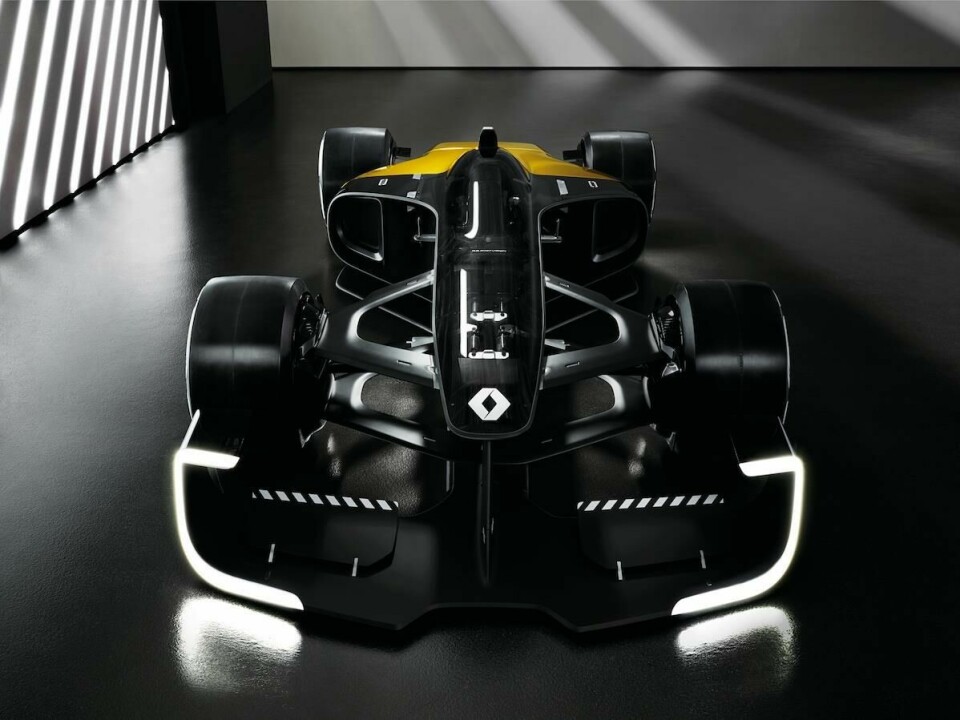
Shanghai 2017: Renault R.S. 2027 Vision explores F1’s future
More focus on the driver, despite an autonomous function…
At this point in time it’s almost easier to name every car company that hasn’t done a ‘Vision Concept’ of some description - arguably in part because the ‘Vision Gran Turismo’ series of concepts for the famous video game popularised the phrase - but, perhaps after Alpine having its fun with a skeletal open-cockpit sports car, Renault Sport fancied a go at its own, though this time not connected to the ‘real driving simulator’.
Returning to Formula 1 as a full factory team, not to mention marking the 40th anniversary of its original effort, Renault has peered into the future to create the R.S. 2027 Vision - its idea of where the sport’s technology will be in a decade’s time.

Is this what 50 years of evolution will look like?
Most noticeable at first is that, while 2017’s revamped F1 cars are covered in wild winglets wherever permitted, the R.S. 2027 has a smoothed-down purity of form that seems to speak of a shape crafted more by designers than engineers (as do the front wishbones that combine to resemble the Renault logo from above, or the enormous wheel rims). The wings essentially comprise of a single large plane each, plus two simple active flaps at the front. The rear wing is also active, retracting to seamlessly integrate with the car’s tail - an extreme take on DRS - and when extended the main surface splits apart to become wider, much like the pop-up wing on a Porsche Panamera Turbo.
Both wings have integrated light strips front and rear on the leading and trailing edge respectively, the front ones using the C-shaped aesthetic signature seen on the current Megane and Talisman.

The black and reflective-yellow side pods are swept back, very curvy and very short, while the traditional top-mounted air intake in contrasting carbon grey is as small as possible, protruding out from the low-profile engine cover like a periscope. Said air scoop would feed a 670-horsepower turbo V6 which is supplemented by an equally-powerful hybrid ERS to create a megawatt of power in a car weighing a claimed 600 kilos.

Renault Sport tried to make an enclosed driver more visible to fans
The cockpit is fully enclosed by a transparent polycarbonate canopy to improve both safety and aero. While the driving is aided not just by all-wheel-drive and rear-steer but by an autonomous mode that can take over in case of an accident, Renault Sport claims nonetheless that it envisages a greater focus on the pilot, a sentiment expressed visually through a transparent honeycomb pattern on cockpit sides, helping audiences see their hero at work. It also says that fans would have access to live telemetry to forensically track the driver’s progress, something F1 sporting boss Ross Brawn would surely like to introduce much earlier than 2027…

Renault Sport Racing managing director Cyril Abiteboul says of the project: “One role of Renault Sport Racing is to anticipate the future of Formula 1 so that it draws a maximum number of fans in an environment consistent with Groupe Renault’s objectives. We look forward to generating inspired conversations with the racing community, fans and enthusiasts through this concept that highlights our ideas and desires.”



